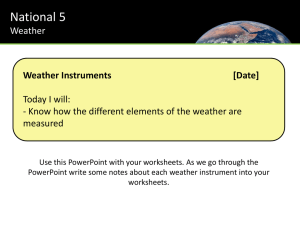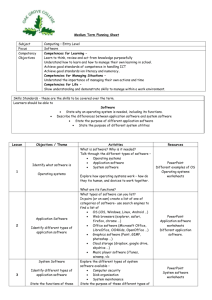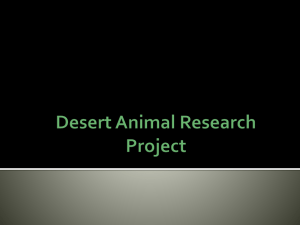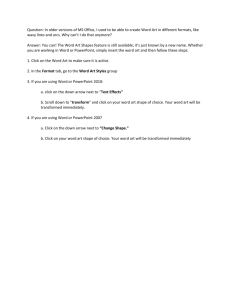Food Inc supplemental web 2.0 unit
advertisement
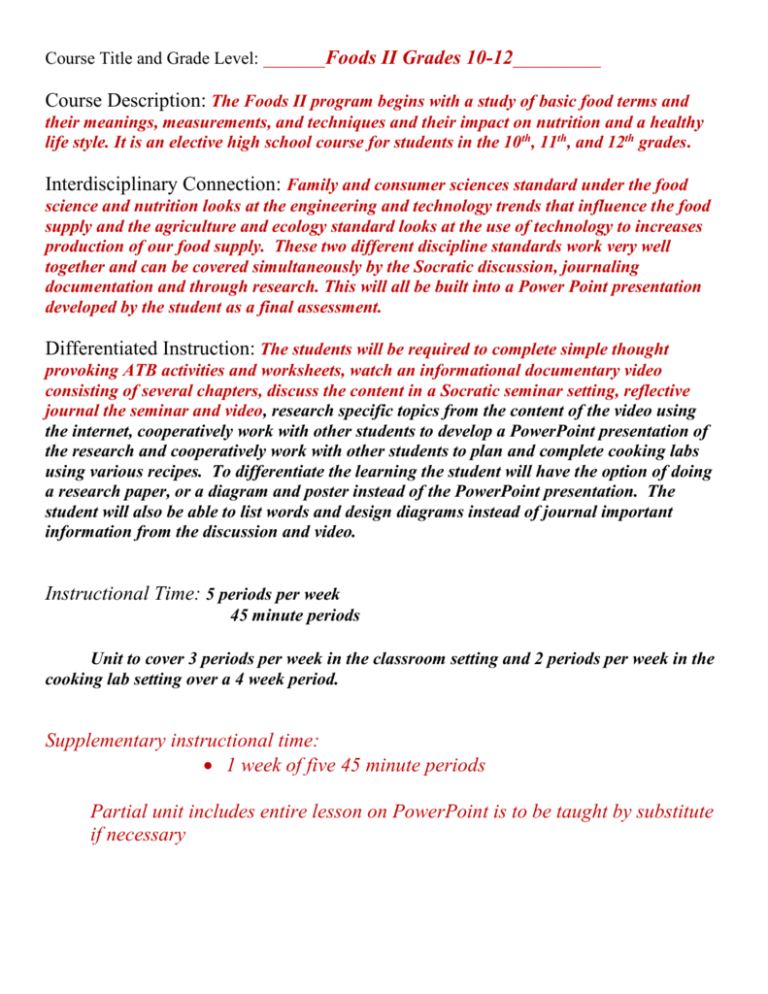
Course Title and Grade Level: _______Foods II Grades 10-12__________ Course Description: The Foods II program begins with a study of basic food terms and their meanings, measurements, and techniques and their impact on nutrition and a healthy life style. It is an elective high school course for students in the 10 th, 11th, and 12th grades. Interdisciplinary Connection: Family and consumer sciences standard under the food science and nutrition looks at the engineering and technology trends that influence the food supply and the agriculture and ecology standard looks at the use of technology to increases production of our food supply. These two different discipline standards work very well together and can be covered simultaneously by the Socratic discussion, journaling documentation and through research. This will all be built into a Power Point presentation developed by the student as a final assessment. Differentiated Instruction: The students will be required to complete simple thought provoking ATB activities and worksheets, watch an informational documentary video consisting of several chapters, discuss the content in a Socratic seminar setting, reflective journal the seminar and video, research specific topics from the content of the video using the internet, cooperatively work with other students to develop a PowerPoint presentation of the research and cooperatively work with other students to plan and complete cooking labs using various recipes. To differentiate the learning the student will have the option of doing a research paper, or a diagram and poster instead of the PowerPoint presentation. The student will also be able to list words and design diagrams instead of journal important information from the discussion and video. Instructional Time: 5 periods per week 45 minute periods Unit to cover 3 periods per week in the classroom setting and 2 periods per week in the cooking lab setting over a 4 week period. Supplementary instructional time: 1 week of five 45 minute periods Partial unit includes entire lesson on PowerPoint is to be taught by substitute if necessary Materials: DVD – Food Inc. DVD player and TV or computer with projector Teacher made ATB activities Chapter notes from the media Worksheets from the chapters Chapter questions for Socratic discussion Note paper & writing utensil Computer lab Cooking lab Recipes Job rotation schedule and planning sheet Supplementary Materials: Teacher made Web 2.0 PowerPoint presentation of documentary film “Food Inc.” Includes 5 of 9 chapters Instructions for supplementary lesson: All Students must get their folders from the correct class bin and have a writing utensil ready. Give NO pencils or pens out to anyone. Day one 1. 2. 3. 4. 5. Set up and turn on projector. Sign on to computer. Pull screen down to view PowerPoint presentation. Pass out Rubric check list to all students. Pass out Information Organizer Worksheet for Journaling 6. 7. 8. 9. Play PowerPoint of Rubric Checklist for unit on Food Inc. Go over each slide with class When finished, show opener PowerPoint If time allows, discuss opening clip. Day two, three, four and five 1. Pass out ATB activity or worksheet to students as they arrive and have them complete it. 2. Set up and turn on projector. 3. Sign on to computer. 4. Pull screen down to view PowerPoint presentation. 5. Discuss ATB activity before showing PowerPoint. (use lesson notes) 6. Play the day lesson power point. (labeled CD or wikispace) 7. Go over focus question. 8. Click on link to view film clip. 9. Enlarge to full screen for viewing. 10.Remind students to take notes during the film clip on their Information Organizer Worksheet for Journaling. 11.Have students sit in a circle for Socratic discussion after film clip. 12.Use two circles if class is larger than 16- one inner and one outer circle [outer circle observes and does not speak or intervene] 13.Have students discuss the focus question and the further questions listed on the PowerPoint. 14.Students are to discuss with each other. Teacher is the facilitator. 15.After discussion is sufficient, end Socratic discussion. 16.Discuss topic of journal for the day and give time to write journal reflection on the back of Information Organizer Worksheet for Journaling. Primary Resources: “Food, Inc.” A Robert Kenner Film “Food, Inc.” Lesson Plan at http://www.takepart.com/news/tag/food-inc-lesson-plan. The lesson plan has a detailed discussion focus questions, ideas for action, worksheets, objectives, activities for each chapter of the video. Internet Resources: The following internet sites will assist the student in research for their project on the various topics discussed in the video and the Socratic seminars. Each of these sites has been cited by the video and they are reputable organization sites. Center for Food Safety http://www.centerforfoodsafety.org/ Center for Science in the Public Interest http://www.cspinet.org/ The Food Trust http://www.thefoodtrust.org/ Food and Water Watch http://www.foodandwaterwatch.org/ Center for Ecoliteracy http://www.ecoliteracy.org/ Organic Consumers Association http://www.organicconsumers.org/ Instructional Unit: Essential Questions: How our food supply is genetically modified? Why our food supply is genetically modified? Who regulates what is done to our food supply? How has technology changed our food supply? Performance Objectives (Standard Strand) The student will demonstrate understandings of: Standard Strand PA Academic Standards for Family and Consumer Sciences 11.3: Food Science and Nutrition PA Academic Standards for Environment and Ecology 4.4: Agriculture and Ecology Performance Activities (Standard Statement) Instructional Strategies (Best Practices) Standard statements 11.3.12.A Analyze how food engineering and technology trends will influence the food supply. Identify specific trends in our current food supply (i.e.; processed meals, boxed side dishes) Point out what technology is being used for creating our food supply 11.3.12.B Evaluate the role of government agencies in safeguarding our food supply. An opening thought provoking question will be used as a focus for watching each chapter of the film. Cognitive strategy (Vygotsky 1978) Completed ATB activities Chapter ATB’s and worksheets will be used for opening thoughts and reflection after discussion. Material mediated scaffolds/structured overview.(Sanacore 1983) Written reflections after every chapter and discussion. Socratic discussion will be utilized after viewing most chapters of the film. Cognitive strategy (Vygotsky 1978) Completed worksheets Captioned drawing of understanding Lab evaluations Teacher observation Prepare Lab plans and schedule will be used to organize cooking labs for cooperative learning (Bonwell & Eison 1991) Determine how active the government is in providing us with safe food. What recommendations would you offer the government agencies that safeguard our food? 4.4.10. D Evaluate the use of technologies to increase plant and animal production. Compare the technologies used today against what was used 25 years ago for increased food production. Judge what has changed the most. Justify the reason for technologies to increase production of our food supply. Assessment Cooking labs will be used for cooperative & active learning. (Kagan 1985) (Bonwell & Eison 1991) Taste testing foods cooked (Active Learning) (Bonwell & Eison 1991) Using the computer lab with internet access, the student will research a specific teacher assigned video topic. Cognitive strategy (Vygotsky 1978) Rubric to guide and evaluate presentation/project.
